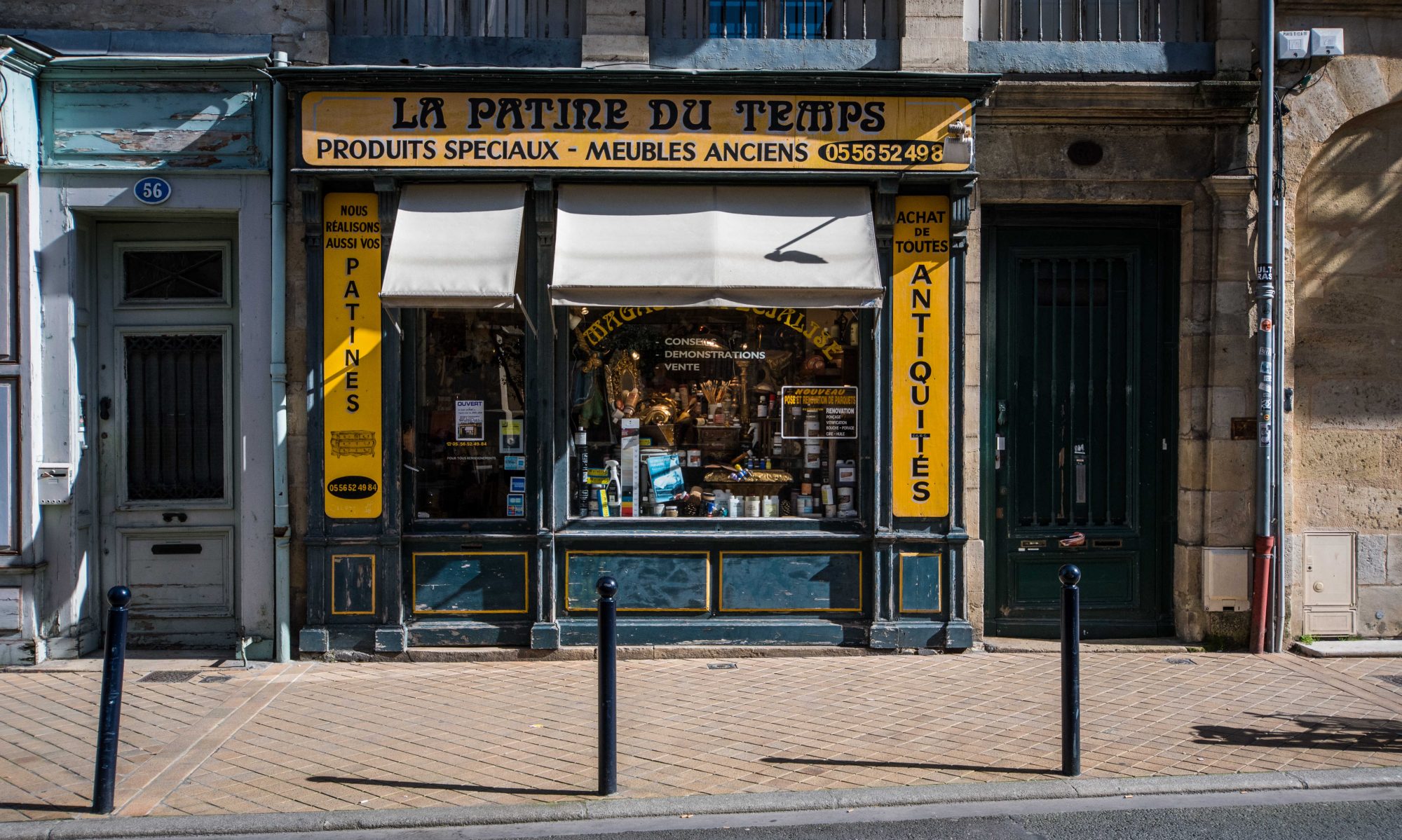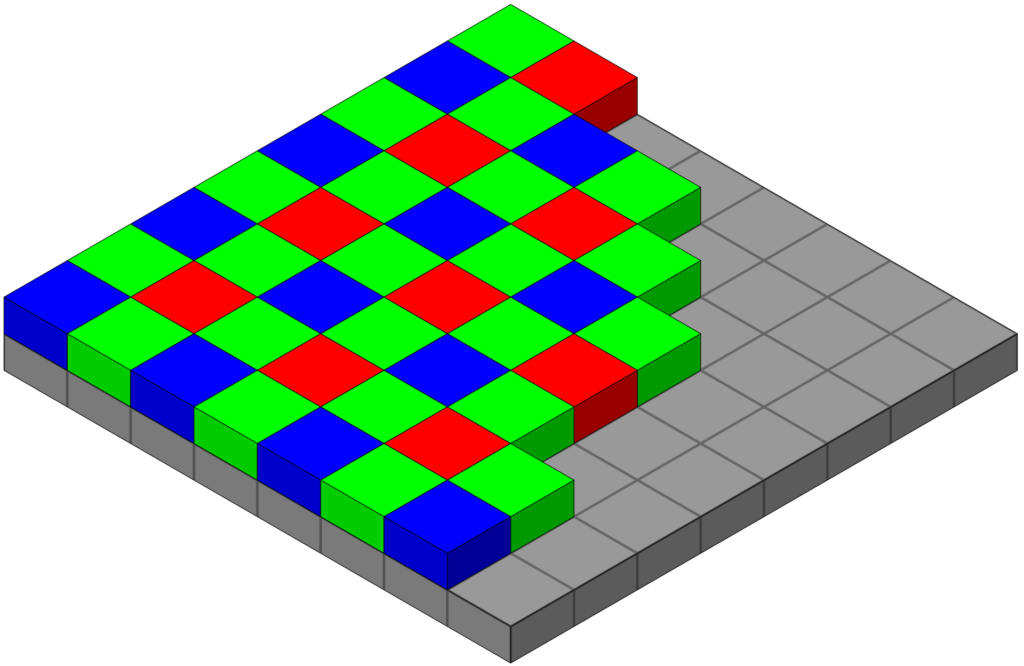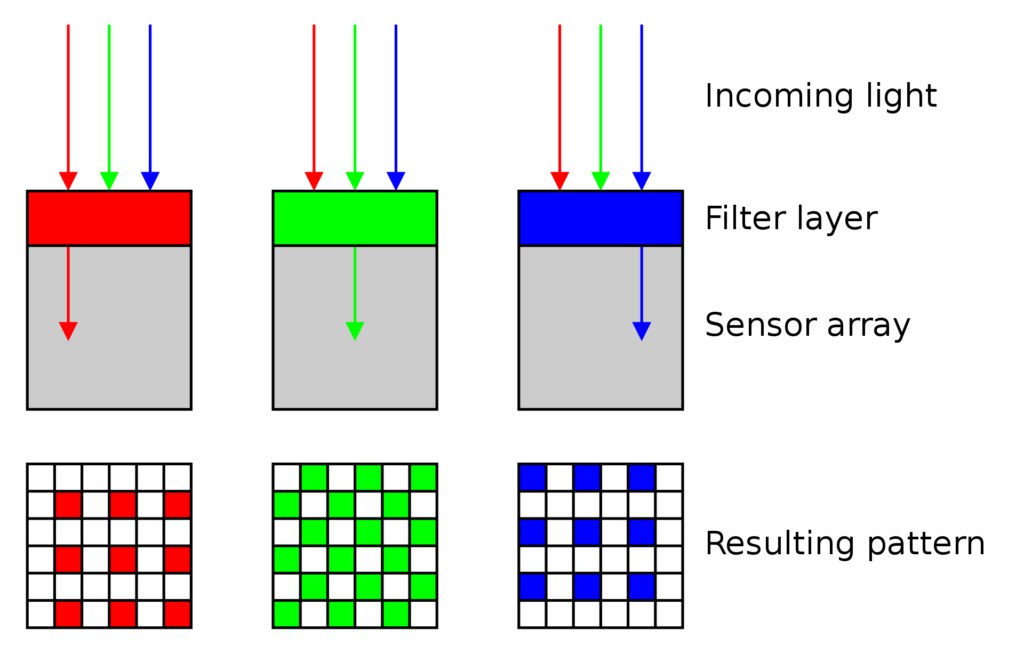(And is it better?)
Over the years, Leica have evolved from film to digital cameras, much like all the other camera manufacturers. This said, they’ve always shown a preference for black and white photography, and to this end, have recently started producing a ‘Monchrome‘ version of their camera bodies – to the extent that there is even a monochome version of the ‘compact’ Q2 series.
So what does ‘monochrome‘ actually mean?
In a conventional colour sensor, there is a filter layer in direct contact with the sensor itself. This is called the ‘Bayer‘ filter, named after it’s inventor.
Each photo-site has a coloured filter over it, thus only allowing certain wavelengths of light through to the sensor itself.
Light from four adjacent photo-sites makes up one pixel. Thus in the example of the Bayer filter above, the first pixel is made up of light values from one blue, one red and two green photo-sites. This approximates to what the human eye ‘sees’ in terms of colour – the mixture of these four light values gives the ‘colour’ of that particular pixel. The greater the pixel, or photo-site density, the more accurate the rendered colour will be, but with the disadvantage of receiving much less light as the density increases – the photo-sites are physically smaller, and thus receive less photons of light.
For the second pixel to be recorded, the group of four moves over 1 photo-site, and records 4 photo-sites again. This continues all the way to the right hand end of the sensor, then moves down one photo-site, and starts all over again. Obviously, this actually happens in real-time over the entire sensor area, and is almost instantaneous.
This is the reason why sensors are often stated as having an ‘effective’ pixel value GREATER than the quoted pixel value. The ‘borders’ (pixels on the edge of the sensor) are not counted as part of the picture itself, merely used to create the 4 photo-site grid.
The resulting information is ‘rebuilt’ by the image processing engine to create a colour image.
In a monochrome sensor, the Bayer filter does not exist. The pixel information is combined in one of two different ways – either the four adjacent photo-sites are ‘summed’ together as in a colour image (which gives greater dynamic range overall, as 4 times as many photons are recorded) or single photo-sites are recorded as individual pixels.
The removal of the Bayer filter creates a more authentic ‘colour’ depth (or grey tone between white and black) as there is no ‘mixing’ of different filtered light values – this means that the overall difference between the levels of grey is far more subtle, something which cannot be reproduced by simply using a colour sensor (with Bayer filter) and choosing « B&W » in the capture menu of the camera.
It should be noted that Pentax have now launched their ‘Monchome‘ camera, based on the K-3 APS-C reflex camera. At €2500 (body only) I imagine that it’s not something people will buy just to ‘try out’ but I think it’s a step in the right direction. I would very much like to see a monochrome version of the NIKON Z6 or Z7. Sadly there is no reasonable way to remove the Bayer filter and reprogramme the recording software to be able to undertake this after the camera has been made.
Leica price the monchrome version of their full frame M11 at €9540 where the traditional ‘colour’ version only costs €8750 – why nearly €1000 no-one knows….perhaps simply because it’s a Leica?
UPDATE : I wrote to Thom Hogan and asked if it was really so unreasonable to imagine a monochrome version of the Z6/Z7 could exist one day?
His reply, short and to the point :
« You can imagine it all you want ;~). Not difficult at all.
You can even buy one (from a third party, maxmax), but at much higher cost and the phase detect autofocus layer is removed ;~(. »
Thanks Thom – I’ll keep it in mind 😉


